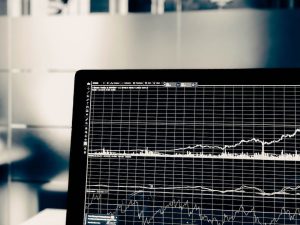The foreign exchange market, commonly known as forex, is the largest and most liquid financial market in the world. It operates 24 hours a day, five days a week, and involves the buying and selling of currencies from different countries. Forex trading is a vital aspect of international trade and commerce, and it allows individuals and institutions to hedge against currency risk and generate profits from fluctuating exchange rates.
Banks are the primary players in the forex market, as they offer a range of services to clients, including currency exchange, hedging, and speculation. To execute forex trades, banks use electronic platforms that provide real-time pricing, trading tools, and access to liquidity pools. These platforms are designed to handle large volumes of transactions and provide a secure environment for trading.
The most popular platform used by banks for forex trading is the Electronic Communication Network (ECN). An ECN is a decentralized network of liquidity providers, including banks, hedge funds, and other financial institutions, that offer bid and ask prices for currencies. The ECN acts as an intermediary between the buyers and sellers, matching orders based on the best available prices.
In the ECN model, banks can trade directly with each other, without the need for a middleman or broker. This reduces transaction costs, improves transparency, and increases market efficiency. The ECN also allows banks to access a wider range of counterparties and liquidity providers, which enhances their ability to execute trades at competitive prices.
Another platform used by banks for forex trading is the Single Dealer Platform (SDP). The SDP is a proprietary platform developed by banks that provides customized trading solutions to clients. The SDP allows banks to offer personalized services, such as risk management, order routing, and algorithmic trading, to meet the specific needs of their clients.
The SDP is a closed system that only allows clients of the bank to access the platform. This provides a secure environment for trading and reduces the risk of information leakage or market manipulation. The SDP also allows banks to capture a larger share of the forex market by offering unique services that are not available on other platforms.
In addition to the ECN and SDP, banks also use other trading platforms, such as the MetaTrader 4, cTrader, and Bloomberg Terminal. These platforms provide a range of trading tools, including charts, indicators, and news feeds, to help traders make informed decisions. The MetaTrader 4 and cTrader are popular among retail traders, while the Bloomberg Terminal is used by institutional traders and investors.
In conclusion, banks trade forex on a range of electronic platforms, including the ECN, SDP, MetaTrader 4, cTrader, and Bloomberg Terminal. These platforms provide real-time pricing, trading tools, and access to liquidity pools, which enable banks to execute trades efficiently and profitably. The choice of platform depends on the specific needs of the bank and its clients, as well as the level of customization, security, and market access required.





